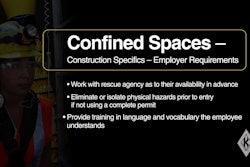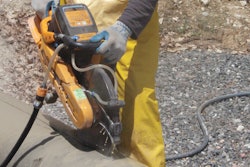The U.S. Department of Labor's Occupational Safety and Health Administration (OSHA) announced a 60-day temporary enforcement policy of its Confined Spaces in Construction standard, which becomes effective Aug. 3, 2015. The agency is postponing full enforcement of the new standard to Oct. 2, 2015, in response to requests for additional time to train and acquire the equipment necessary to comply with the new standard.
OSHA Claims New Confined Space Rule Will Prevent 780 Injuries a Year
During this 60-day temporary enforcement period, OSHA will not issue citations to employers who make good faith efforts to comply with the new standard. Employers must be in compliance with either the training requirements of the new standard or the previous standard. Employers who fail to train their employees consistent with either of these two standards will be cited.
Factors that indicate employers are making good faith efforts to comply include: scheduling training for employees as required by the new standard; ordering the equipment necessary to comply with the new standard; and taking alternative measures to educate and protect employees from confined space hazards.
OSHA issued the Confined Spaces in Construction final rule on May 4, 2015. The rule provides construction workers with protections similar to those manufacturing and general industry workers have, with some differences tailored to the construction industry. These include requirements to ensure that multiple employers share vital safety information and to continuously monitor hazards with a safety option made possible by technological advances after the manufacturing and general industry standards were created.
OSHA estimates the confined spaces rule could protect nearly 800 construction workers a year from serious injuries and reduce life-threatening hazards.



















